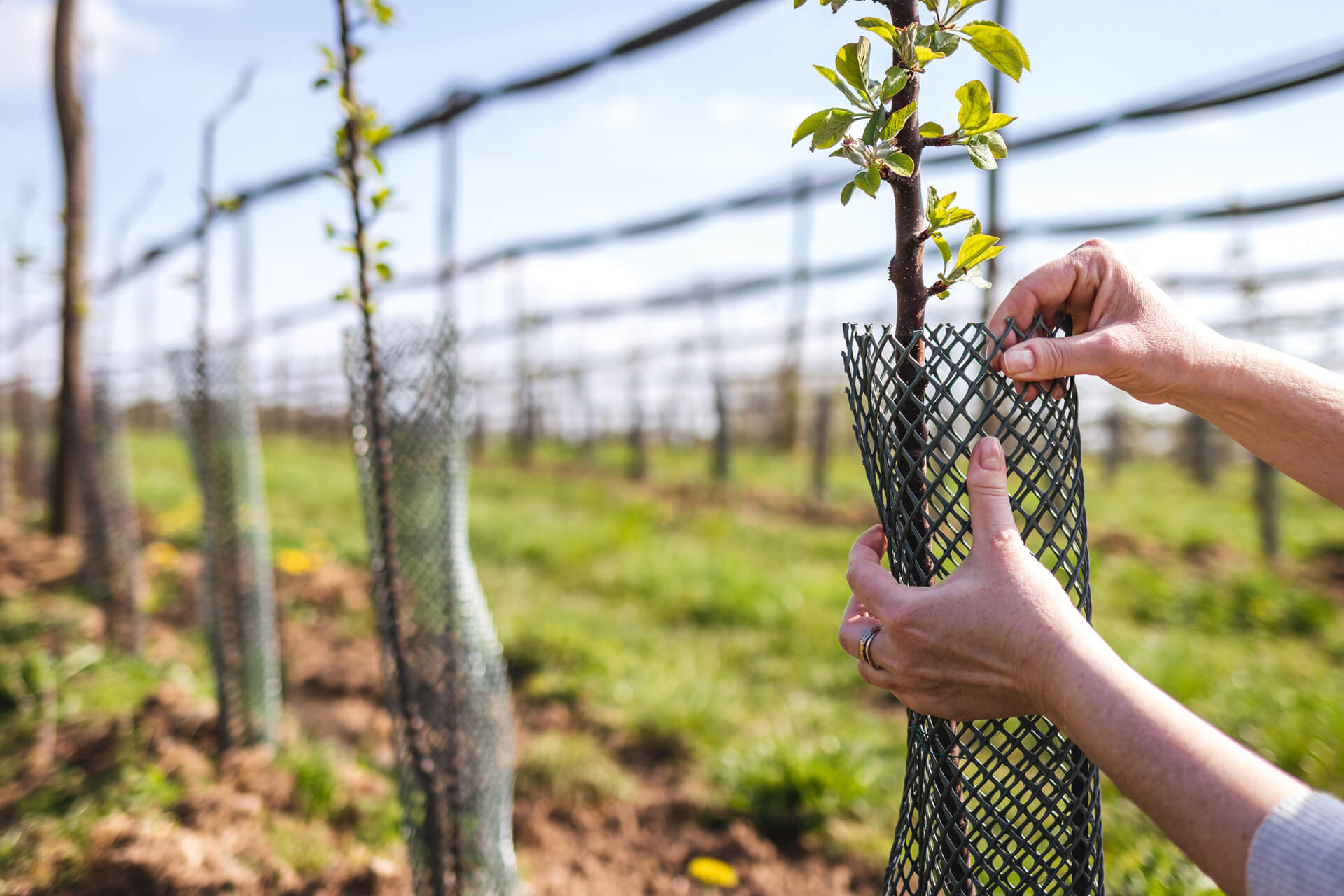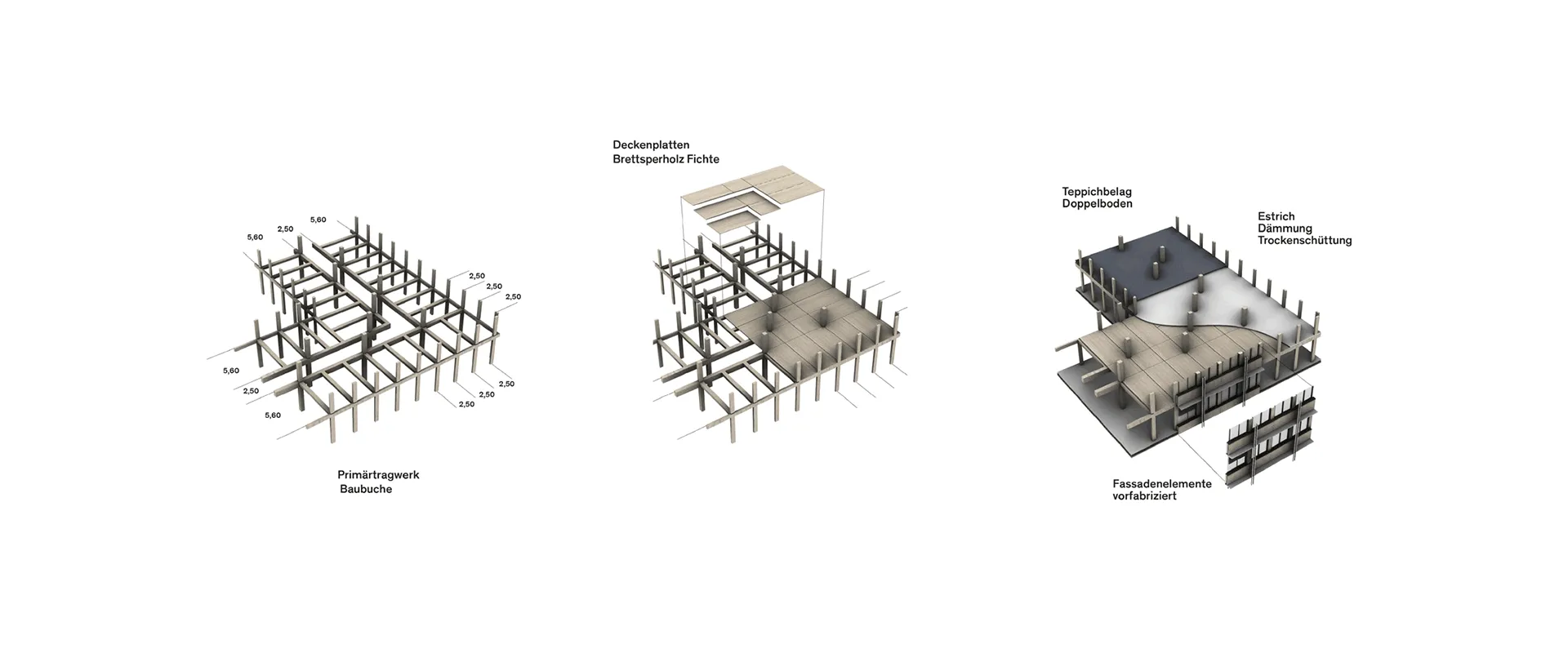
building with wood
sustainable construction for our future!
Advantages of timber construction at a glance
Environment
- forms the ideal basis for diverse recycling concepts through urban mining and cradle-to-cradle processes and thus a sustainably designed circular economy
- promotes the careful use of resources
- offers outstanding building biology
- strengthens regional value chains
Effort & cost
- modular design allows time- and cost-efficient construction
- compared with conventional buildings, wooden architecture is created in 50-70 percent of the time
- the flow of construction on site is accelerated
- comparatively low weight reduces transport costs and effort, also for timber hybrid structures
Quality
- modular construction and a high degree of prefabrication result in buildings of the highest quality
- projects can be planned in great detail in advance
- offers a high level of stability
- offers a high level of psychological warmth
- many people place a high value on natural materials – and not just when it comes to interiors
- offers outstanding building biology
The sustainable building material wood is reconquering the cities - and our thinking
Modular construction and industrial production ensure high quality
It might sound surprising, but actually it makes complete sense: We are going back to wood, that good old-fashioned material that allows for the highest degree of precision and prefabrication. The high level of industrialization offers decisive advantages in construction. Entire components are factory produced, protected from the weather and marked by consistently high quality. These days, entire rooms can be loaded onto a flat-bed truck and assembled at the construction site. Prefab construction is a boon to the regulated construction process. Wood architecture is characterized by speed and precision.
Wood architecture surpasses expectations
Wood, that traditional construction material, is now seen as a true super material that combines resilience, resource efficiency and sustainability. The worlds of construction and legislation are taking notice. Some restrictions were likely based more on psychological than practical concerns, such as protection from fire and from noise. The latter problem has been resolved through the use of additional mass in floor slabs. But protection from fire requires the expertise of experienced planners who not only keep an eye on the flammability class of construction materials, but also on the fire resistance of an entire structure. Today’s high-rise buildings made of wood have achieved the highest level of safety. Both Bad Aibling and Berlin now have wooden buildings of 25 meters in height; Dornbirn has a 27-meter building; at the Sara Kulturhus in Sweden, the bar is just under 80 meters; and Vienna tops them all with its 87-meter high HoHo Tower. London is currently considering a 300-meter hybrid wood skyscraper, with 1,000 apartments on 80 floors. In other words, traditional construction material can also be high-tech: breathable and dynamic, far from old-fashioned and rigid. It’s well worth considering the prospect of entire skylines constructed of wood.
Wood’s outstanding construction features
Architecture is closely bound with applied psychology. We want to feel comfortable in our surroundings. A house becomes a home, a city district becomes a neighborhood. For many people, wood represents the ultimate material for living spaces: natural, renewable and healthy. No other building material is enjoying such a renaissance. Experts nowadays are talking about the dawn of a new “age of wood,” because this material can be processed according to precise measurements and promotes a positive indoor atmosphere. Many houses built of solid wood also feature the material visibly. Wood lives, it breathes, it swells and shrinks as it absorbs or releases moisture in the air. Instinctively, many people feel comfortable in a wooden house, and the question of problematic emissions has also been conclusively resolved in terms of building biology. Which is why many buildings feature interior surfaces that are open and breathable rather than painted and treated. The environmental advantage is clear: Natural wood panels can easily be recycled.
Wanted: modern timber homes
Wood construction is en vogue. For years, its share of the construction market has been growing, and the association of german master carpenters (Bundesverband Deutscher Zimmermeister) predicts, that it will »further increase with the construction turnaround and the associated focus on CO2 reduction and resource conservation.« In terms of home construction, 2020 saw an average of 20.4 % of all new building permits issued predominantly in wood: an increase of almost two percent. Wood architecture is flexible and climate neutral, traditional and high-tech, and ideal for industrial prefabrication.

Insights from our expert, Helge Kunz
»What does Rolf Mühlethaler's Freilager Zurich have in common with the Brock Commons Tallwood House in Vancouver and Frei Otto's Multihalle Mannheim? In all of the above, wood plays a supporting role. It is a versatile and traditional building material. Single-family homes, stoops, halls and sports facilities made of wood have long been standard. And today we are even seeing wooden skyscrapers. A few years ago, this would have been one of those ecological pipe dreams; today, there is real change in the world of construction. Sustainability, resource efficiency and CO2 reduction are playing a bigger role than ever. I have long been aware that timber construction is also an ideal leverage point for achieving climate goals, because wood is an ideal carbon dioxide storage and acts as a climate buffer! That makes it indispensable for a CO2-neutral construction industry and lifestyle. In short, there are many reasons why this traditional building material is enjoying a renaissance, aside from its extraordinary ecological qualities.«

Renewable raw materials
The recent crisis in raw materials has led to an enormous price increase for construction. Wood, too, has been caught up in the maelstrom of international demand for sustainable materials. At least there appears to be enough raw material out there: Canada’s forests alone can provide around 15 billion cubic meters of wood, gover the next two generations, enough to meet the needs of one billion people. We have come a long way from the primitive huts of our ancestors to the wooden skyscrapers of today. There’s no turning back: The age of wood has begun. And it sounds like a growth story.
